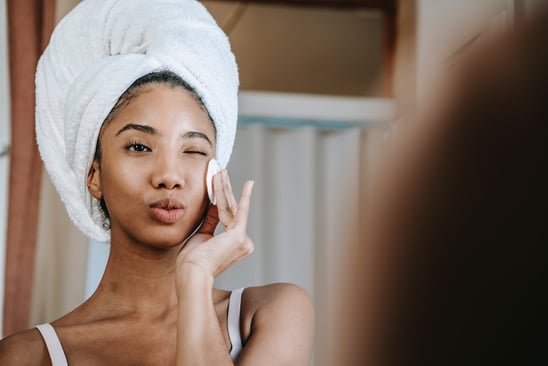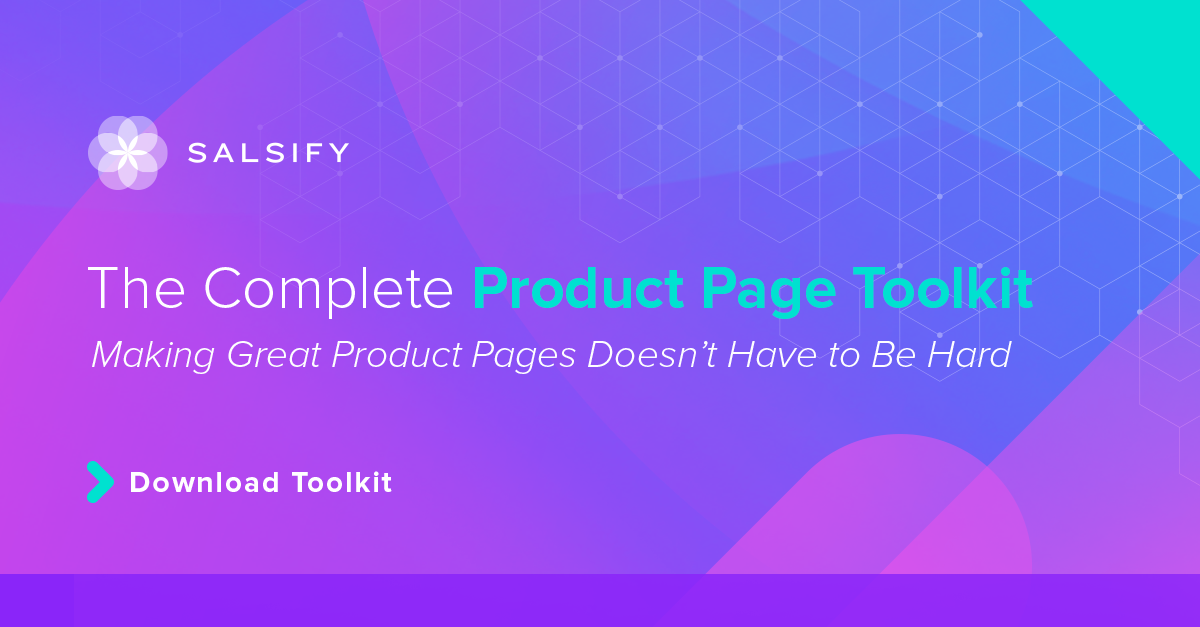

The Complete Product Page Toolkit
Download our toolkit to learn tested tips and tricks for building engaging, converting product pages.
DOWNLOAD TOOLKITPIM
Manage all product content in one central system of record.
Syndication
Easily syndicate product content to every consumer touch point.
Enhanced Content
Enrich product pages with below-the-fold content and rich media.
Intelligence Suite
Bring AI-powered capabilities directly into your Salsify workflows.
Grocery Accelerator
Leverage the first-ever category-wide PXM accelerator in the grocery industry.
GDSN Data Pool
Synchronize standard supply chain, marketing, and ecommerce attributes globally.
Digital Shelf Analytics
Continuously optimize your organization’s product content syndication.
Catalog Sites
Share secure, on-brand, and always up-to-date digital product catalogs.
Automation and AI
Automate business processes and enhance Salsify workflows with AI.
PXM Platform, Integrations, and APIs
Integrate the PXM platform with the rest of your enterprise systems architecture.
Supplier Onboarding
Accelerate supplier onboarding while ensuring your schema requirements are met.
Product Listing
Sell products faster with Product Listing.
Content Enrichment
Increase online conversions with Content Enrichment.
Automation
Save time and increase operational efficiency with retail automation.
SXM Platform, Integrations, and APIs
Integrate the SXM platform with the rest of your enterprise systems architecture.
Syndication Network
Automate how you exchange product content data to the digital shelf.
Enhanced Content Network
Turn product pages into product experiences with Enhanced Content.
Commerce Platform Integrations
Create winning product experiences everywhere shoppers are, including on owned sites.
GDSN Data Pool
Synchronize standard supply chain, marketing, and ecommerce attributes globally.
Open Catalog
Connect to the digital shelf faster with an open, standardized, and free product catalog.
Resources
Resource Library
Explore our ecommerce resources to get everything you need to win on the digital shelf.
Blog
Read our blog to get actionable insights for navigating changing markets and industry demands.
Webinars
Watch our on-demand ecommerce webinars to gain expert advice and tips from our community of industry leaders.
Customer Blog
Gain the latest tips, industry trends, and actionable ecommerce insights.
Knowledge Base
Investigate our knowledge base to build your Salsify skills and understanding.
API
Examine our comprehensive API and webhook guides to start working with Salsify quickly.

Download the report to get expert insights, consumer research, and top industry trends.

What do shoppers want from beauty and personal care brands? While the list is large, the central theme is clear: innovation. As the market continues to shift — and buyers continue to change and grow — at a rapid pace, brands must stay informed of the latest beauty and personal care industry trends.
Here are the top consumer trends in beauty and personal care brands, highlighting how the market continues to shift dramatically with changing technologies and buying behaviors.
Environmental awareness website TheRoundup reports that 78% of consumers feel that sustainability is important, and 55% of those same shoppers said they would pay more for eco-friendly brands.
Beauty and personal care shoppers understand how their beauty routines impact the planet, which is why they’re looking for accredited brands that meet environmental and ethical standards. Shoppers want to know if products are made out of sustainable, Earth- and body-friendly materials — and they want brands to put this information front and center.
Relate your products to overall health and wellness. If they’re made from organic and natural ingredients — or scientifically proven to improve well-being — feature this information loudly and proudly. Even better, make it a cornerstone of your brand identity.
Make it as easy as possible for consumers to find information about your products, including:
Display these details on product bottles, packaging, product detail pages, social media highlights, and anywhere a shopper would look for this information. This approach will help consumers feel confident when buying from you, helping to establish transparency and convey brand identity.
Don’t just make claims. Instead, use user-generated content (UGC) to showcase how your products can help combat stress and bring normality during uncertain times. The more apparent the connection between products and wellness benefits, the better it’ll resonate with beauty consumers.
Advancements in technology have spurred the expansion of personalization and customization at scale. McKinsey & Company reports that 71% of consumers expect companies to offer personalized interactions — a need, not a want. The reason for this growth lies in the consumer expectation that companies now recognize them as individuals and hold information about their personal interests.
For beauty and personal care brands, shoppers want tailored recommendations and customized products that help address their unique needs.
Artificial intelligence (AI) in ecommerce continues to explode in popularity, and AI tools can support a wide range of initiatives for beauty and personal care brands. From leveraging AI to power product recommendations and customer service initiatives to managing inventory and creating product content at scale, brands must be open to a test-and-learn approach to continue to drive innovation.
For beauty and personal care brands, AI technology could also provide shopping experiences previously only available in-store, such as virtual try-on tools and AI-powered skincare and makeup recommendations.
According to market research firm Mintel, 52% of TiKTok users use the social media channel to discover new beauty products — with the hashtag #skincare alone having over 136 billion views on the platform.
But what are the makings of a viral product on TikTok, Instagram, or another social media channel? Several factors impact whether a product has its time in the spotlight, but one of the biggest is UGC.
On social media, beauty and personal care influencers will share their beauty routines, including their favorite products. As more users — influencers and non-influencers alike — continue to post about these products, and they make the rounds across stories and posts, these products will see an increase in sales.
Due to these often-organic social media posts, these "viral" products regularly sell out on retail and direct-to-consumer (D2C) websites.
While there isn't a perfect formula for a viral product on social media, there are three steps that can help promote your products on these channels:
Change is the only constant in the beauty and personal care industry, and brands must have the teams and tools in place to keep up. Stay abreast of the top consumer trends in beauty and personal care to stay ahead of the changing industry, and build engaging omnichannel shopping experiences to ensure you're ready for the future of shopping.

Download our toolkit to learn tested tips and tricks for building engaging, converting product pages.
DOWNLOAD TOOLKITLavender Nguyen (she/her) is an ecommerce and digital marketing specialist who focuses on sustainable ecommerce brands. She has worked with numerous software-as-a-service (SaaS) and ecommerce brands to explore ecommerce insights.
Standing out on the digital shelf starts with access to the latest industry content. Subscribe to Below the Fold, our monthly content newsletter, and join other commerce leaders.